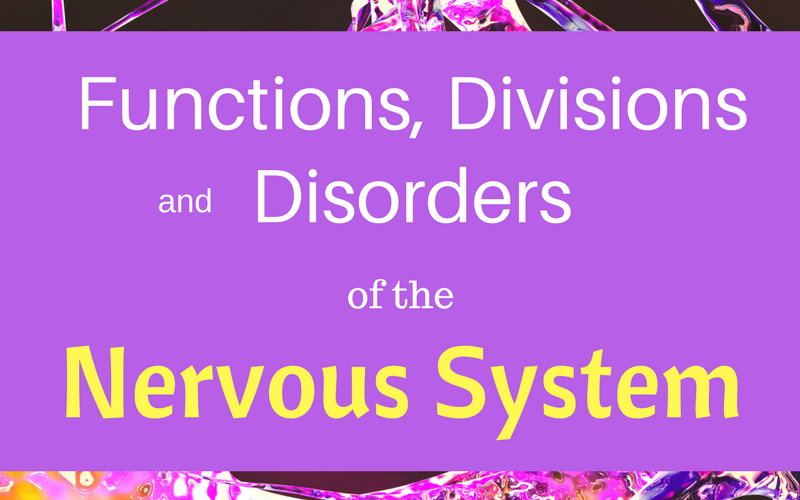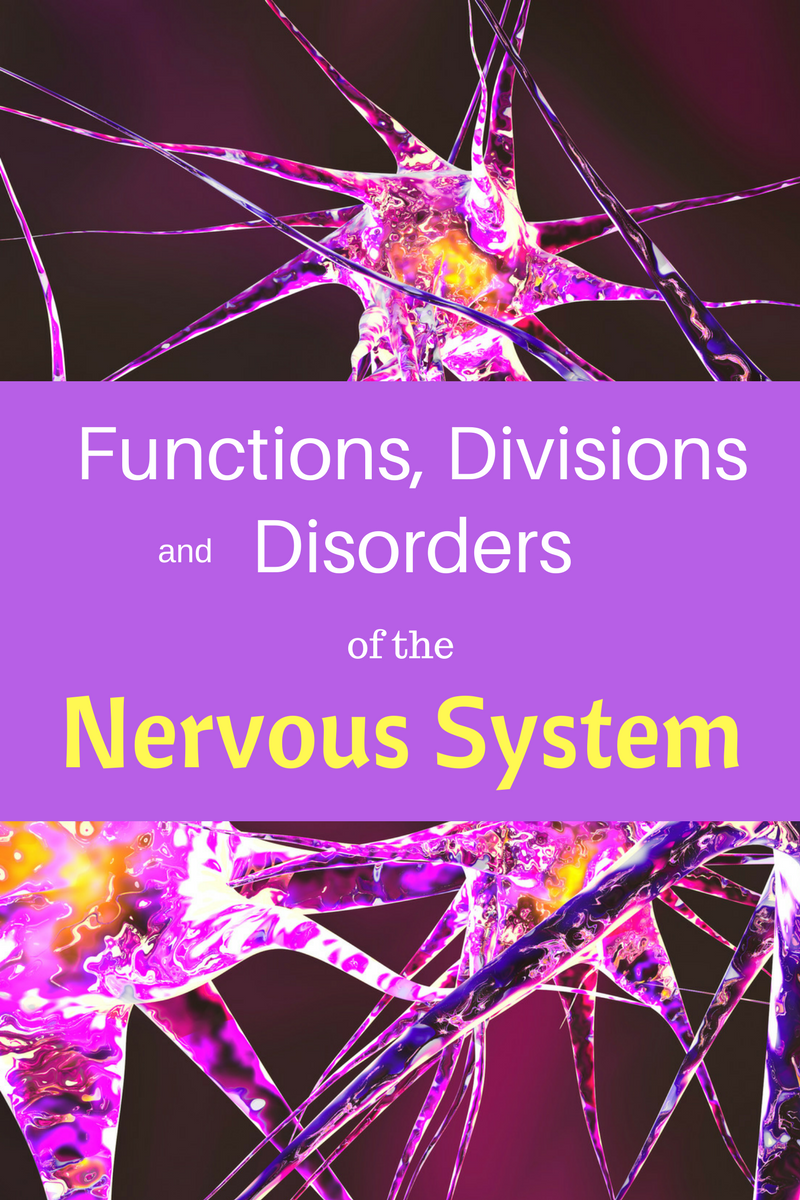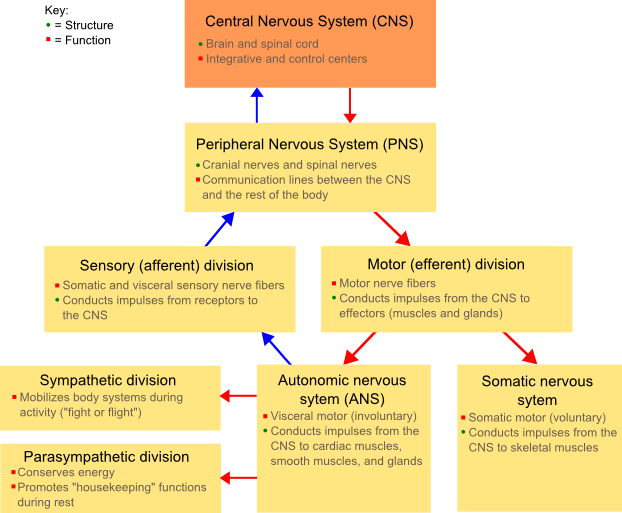THE NERVOUS SYSTEM
The neural system is the major information transmission and processing system of our body. It is accountable for the basic activities of our body and is by far the most complex system of our body.
Development of the Nervous System:
Development of the nervous system takes place during the first month of embryonic life. Thus, any maternal infection can have extremely harmful effects on the brain of the developing infant. The brain is responsible for a multitude of functions. One of them is regulation of body temperature. In premature babies and infants, this function gets hampered, as the part of the brain that regulates body temperature (hypothalamus) is one of the last areas of the brain to develop.
Divisions of the Nervous System:
It is broadly divided into two parts; the central nervous system (CNS) and the peripheral nervous system (PNS). The CNS consists of the brain and the spinal cord, while the PNS comprises of all the nerves of the body associated with the CNS. The major function of CNS is information processing and control. The nerve fibers of the PNS are of two types; afferent fibers and efferent fibers. The afferent nerve fibers transmit impulses from peripheral tissues to the CNS and the efferent fibers transmit regulatory impulses from the CNS to the peripheral tissues.
The PNS is divided into two divisions called the somatic nervous system and autonomic nervous system. The somatic nervous system relays impulses from the CNS to skeletal muscles while the autonomic nervous system transmits impulses from the CNS to the involuntary organs and smooth muscles of the body.
The autonomic neural system is further classified into the sympathetic nervous system (“fight or flight” response) and the parasympathetic nervous system (“rest and digest”).
Nervous tissues of the nervous system are made up of two types of cells; neurons and neuroglial cells. Some distinctive functions that are thought to be associated with the nervous system like thinking, feeling, remembering and controlling our movements are brought about by neurons. These functions are carried out by impulses traveling along the neurons. Neurons are supported by the neuroglial cells.
Watch this animation on how the nervous system works:
Functions of the Central Nervous System:
- The central nervous system is the control center of the body. It regulates organ function, higher thought, and movement of the body.
- The nervous system monitors any changes that occur inside as well as outside the body. These changes are known as stimuli and the cells that monitor them are sensory receptors.
- It processes and interprets the sensory input and determines the appropriate response.
- In order to bring about a response (motor output) neurotransmitters are released which cause the activation of muscles or glands.
There are several nervous system disorders affecting both the central (brain and spinal cord) as well as peripheral nervous systems.
Central Nervous System Disorders
Bacterial/ viral infections:
Bacterial / viral infection of the brain causes inflammation of the layers of the brain (meningitis) as well as inflammation of the brain itself (encephalitis). These infections are often life threatening. There can also be an accumulation of infectious material leading to abscess formation in the brain. CNS can also be affected by the polio virus which causes inflammation of the spinal cord gray matter resulting in spinal and muscle deformity, and paralysis in some cases, especially of the lower limbs. Herpetic vesicles are caused by the herpes zoster virus which produces lesions known as shingles on the body along a peripheral nerve.
Developmental disorders:
It is a congenital neural tube defect. There is an incomplete closure of the spinal canal. This leads to protrusion of the spinal cord and meninges. The lumbosacral area is a common site and it is seen in various forms. Spina bifida occulta is the most common and least severe form of spina bifida in which there is no protrusion of the spinal cord or meninges.
Head and spinal cord injuries:
Head injuries are caused due to trauma and can be fatal. One should never neglect a head injury. Even if there are no external signs of damage there could be a severe internal injury which might take longer to show symptoms. Thus any head injury requires urgent medical attention to rule out serious injury. Common causes of spinal cord injury are vehicular accidents, falls, and accidents associated with contact sports. Severe injuries to the spinal cord occur whenever there are vertebral fractures and dislocations. The function of the spinal cord lower than the level of the injury is thus impaired, giving rise to varying degrees of paraplegia and quadriplegia. Adolescent males are most commonly affected.
Degenerative disorders:
a) Dementia – In this degenerative disorder, there is an eventual loss of memory as the person ages.
b) Alzheimer disease – Herein the frontal-occipital lobes of brain atrophies leading to pre-senile dementia which is characterized by an advanced loss of memory. Usually, it starts between 40 and 60 yrs of age and may take months to years for complete development. 5 to 10% people over 65 years of age are affected. It is marked by progressive permanent memory loss, intellectual functions deterioration, laziness, disorientation, and speech and gait disturbances.
c) Parkinson’s disease – Herein that part of the brain is affected which is responsible for controlling movements due to lack of dopamine. This leads to tremors of the limbs or unnecessary muscle movements due to interference in voluntary movements. This is the most common symptom. Because of symptoms, maintenance of balance becomes difficult. There is also accompanying muscle rigidity.
d) Huntington’s chorea – This is a hereditary nervous disorder. There is a progressive loss of the brain cells leading to deterioration of the nervous system. Symptoms seen are weird, uncontrolled, dancelike movements. It ultimately leads to insanity and death.
e) Multiple Sclerosis: It is a chronic, degenerative disease wherein the myelin sheath over the nerves in the brain and spinal cord is lost. This gives rise to muscle weakness and other symptoms.
f) Hydrocephalus: Fluid accumulation within the ventricles of the brain leads to cranial enlargement which is known as hydrocephalus.
g) Amyotrophic lateral sclerosis (ALS): It is a rare fatal disease in which there is degeneration of the motor neurons which in turn causes muscle degeneration and loss of functionality.
Neuroblastoma:
It is a malignant tumor mainly composed of cells that resemble neuroblasts. Its incidence is more in infants and children.
Epilepsy:
This disorder is in itself includes a cluster of conditions characterized by recurrent seizures. There are different types of epilepsy. Each of them has a unique set of signs and symptoms. Seizures are episodes of convulsions which occur due to sudden, brief and excessive electrical activity in the brain cells i.e. intense neuronal activity. These generally last for a few seconds to minutes. This condition is not life-long and is curable in majority cases with proper treatment and medical advice.
Palsy:
It is a partial or complete loss of motor functions. It is also known as paralysis.
a) Cerebral palsy: Malformation of or trauma to the developing nervous system may give rise to cerebral palsy, although there are many other causes too. This leads to hampered physical development leading to problems in movement and posture accompanied by disturbances of communication, cognition, sensation etc. Seizure disorders may also be seen in these patients. The signs of this disease differ according to age but mainly manifest due to a weakness of the arms and legs.
b) Bell’s palsy: Injury, infection or inflammation of the seventh cranial nerve leads to unilateral facial paralysis. It causes facial asymmetry and facial spasms. Corticosteroids are commonly used for treatment to reduce the inflammation. Generally, it is a self-limiting condition that resolves itself within a month or so.
c) Other causes: An array of causes such as poisoning, trauma or other underlying disorder can give rise to paralysis. It is of different types and is classified according to the cause, muscle tone, distribution, or body part affected. Traumatic injuries to the spinal cord and cerebrovascular accidents are common causes of paralysis.
Headaches:
Various physical and medical conditions, infections, injuries can cause headaches. Most common types are a tension headache, cluster headache and a migraine. A headache in itself is not a disorder, but a commonly seen symptom of an underlying disorder. Thus, it is important to diagnose the condition which is the root cause of it so that successful treatment can be implemented.
Cerebrovascular accident:
It is also known as stroke. If a blood vessel in the brain gets ruptured, it starts accumulating leading to increased pressure over vital areas of the brain. This can cause weakness of the limbs and even paralysis in severe cases.
Mental and behavioral disorders:
a) Schizophrenia is a severe neurological disorder in which there is a distortion of senses and impaired cognition. It is probably linked, in part, to an excessive amount of dopamine. Early medical intervention helps in improvement.
b) Depression can be due to a number of factors although it is commonly linked to a lack of serotonin and/or norepinephrine. It is a serious neurological disorder requiring early medical help.
c) Phobias – Excessive and atypical fears about an object or environment which leads to disturbances in everyday activities and thus the person’s social life are known as phobias.
Peripheral Nervous System Disorders
Many conditions may also affect the peripheral nerves of the body leading to loss of sensation and paralysis.
Peripheral neuropathy:
Some conditions cause injury to the terminal nerves mainly, neuron, axon, myelin and the supporting tissues. This is called peripheral neuropathy. Its presentation starts as a tingling numbness involving the fingers and toes. It further extends to involve the limbs. Diabetic patients, persons with specific genetic diseases of the nerves, vitamin deficiencies especially vitamin B12 etc., herpes infection, leprosy, mercury, lead and other heavy metals poisoning, inflammatory conditions such as Guillain-Barré syndrome etc are the individuals with an increased risk of developing neuropathy.
If the peripheral nerves are injured it directly affects their functioning. Peripheral nerves possess regenerative capacity. Complete recovery can be achieved in some cases with the help of physiotherapy and other exercises when done over a long period of time.



